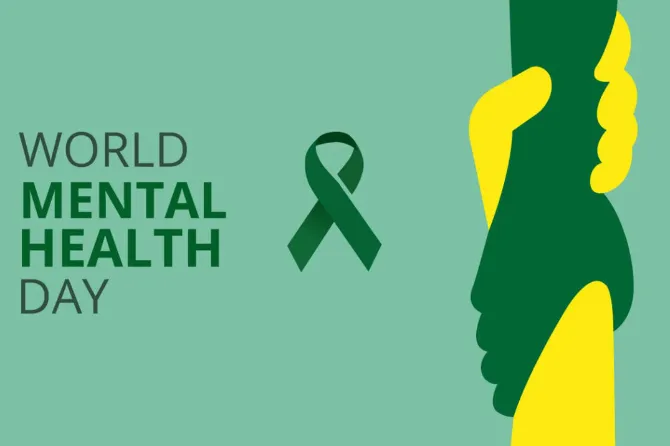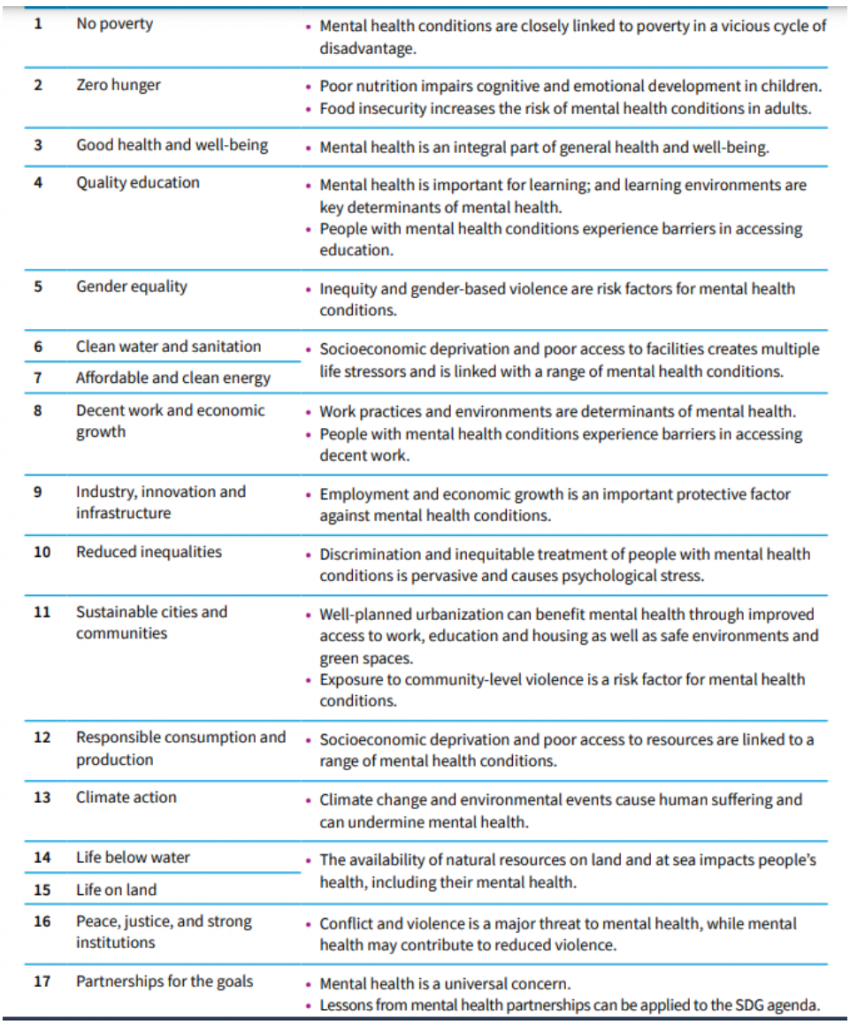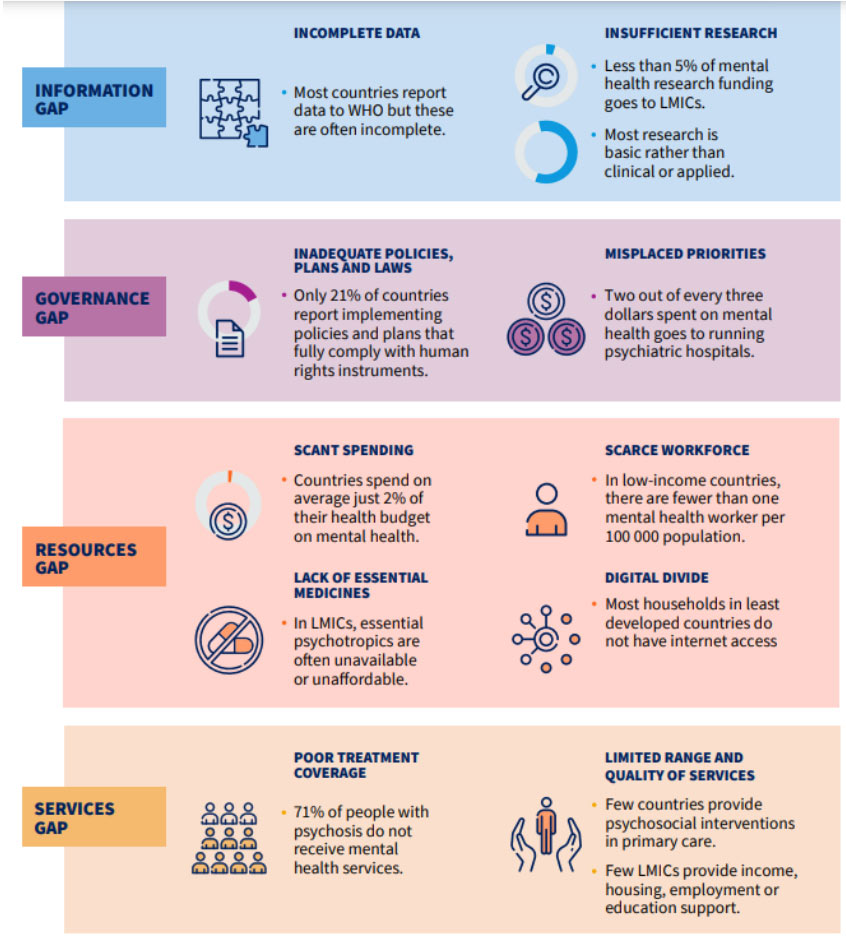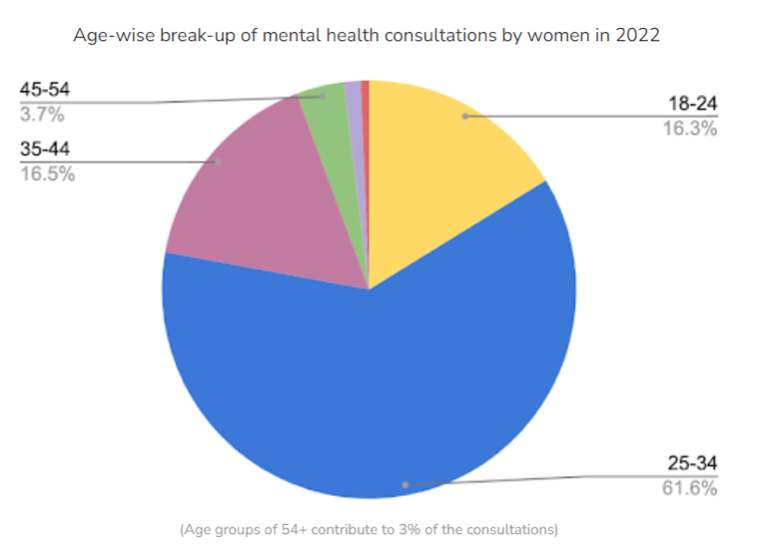
As we commemorate ‘World Mental Health Day’ on October 10 with the theme of achieving good mental well-being as a universal human right, it serves as a harsh reminder that women are most likely silent victims of the mental health epidemic. Bearing this in mind, it is imperative that dialogues on mental well-being delve deeper into understanding gender disparities in mental health.
Ignoring women’s mental health: Affecting the progress of the 2030 agenda
Globally, mental illness is claiming an increasing number of victims, affecting about one in four people at some stage of their lives. Women are its worst victims, with reportedly one in five of them experiencing a prevalent mental illness such as depression or anxiety in comparison to only one in eight men. Despite the disturbing trends of gender disparity in mental health across the world, insufficient research impedes our nuanced understanding of the interlinkages between social inequalities and mental wellness. Thus, defining mental illness can be rather complicated knowing its vast diagnostic terrain. A growing body of evidence shows that the mental health agenda not only needs to facilitate access to quality services and care but also address the common social and economic realities that condition our everyday lives. As countries remain committed to achieving the 2030 Agenda for Sustainable Development, it is critical to recognise the interlinkages (as shown in Figure 1) between the Sustainable Development Goals (SDGs) and mental health with the aim to achieve targeted outcomes.
Figure 1: Mental Health and interlinkages with SDGs

Source: Lund et.al 2018
Changing mentalities: Unlocking the genderised social constructs in mental health
To begin with, women all over the world commonly face glaring social and economic inequities across a wide spectrum of societal interactions. Lower rates of schooling and employment, underrepresentation in leadership positions, energy poverty, limited access to technology and finance, care giving responsibilities, intimate partner violence, and a host of other gender stereotypes actively play a role in contributing to high psychosocial stress in women. Women comprise the world’s most poverty-ridden citizens with 383 million women and girls estimated to live on less than US$ 1.90 a day compared to 368 million men and boys.
Women all over the world commonly face glaring social and economic inequities across a wide spectrum of societal interactions.
Poverty keeps women locked in a vicious cycle of mental stress, because women are differentially impacted by its consequences. Studies conducted in the ’70s have pointed out that financially-strained women with childcare responsibilities are more prone to forms of depression than other women. There is a rich body of literature that indicates that women have restricted options to take up paid employment as they carry out their domestic, reproductive, and care-giving responsibilities for their families. They tend to populate sectors that are often extensions of household duties resulting in low-paid jobs such as in the informal economy. Wages earned by women are often controlled by hierarchical social norms operating within the family structures, which can dictate the control of women and their decision-making over income utilisation. Economic decisions, when taken by women, also tend to be directed towards household expenses and children instead of their own well-being. In fact, there is strong evidence that women are likely to be more affected by severe forms of mental illness in the event of job losses in comparison to men.
Income-related deprivation often leads to food insecurity and is associated with a number of negative physical and mental health conditions. However, women living in food insecure homes with inadequate dietary intake are particularly vulnerable to depression and poor mental health. Mothers facing food insecurity also have to deal with negative impacts on the general health and growth of their children. While women’s food insecurity and poor mental conditions have been proved to be a growing concern in high-income countries, the COVID-19 pandemic has further impacted women’s stress levels, especially as they faced severe food insecurity.
Burdened with high poverty, domestic isolation, and low self-esteem—often arising out of low levels of education and financial independence—can also result in a higher prevalence of psychiatric morbidity in women. A study conducted over five countries including India found that women’s low education and poverty were strongly associated with common mental disorders. Women are also victims of water poverty in spite of being the prime procurers of water as they bear the responsibility of making this vital resource available to their households. Water insecurity can exacerbate frustration, shame, domestic violence as well as mental stress. Inextricably linked to water insecurity is the growing evidence of mental health risks associated with restricted sanitation.
Growing research has shown evidence of mental health risks associated with inadequate sanitation that includes the lack of access to private and clean sanitation spaces, the need to supress the intake of water and food to avoid using sanitation facilities because of the hostile social and physical environment along with fear of sexual or physical violence, etc. Very little research has been carried out on women’s unmet menstrual hygiene needs and its impact on mental health; this warrants a need to analyse its interconnectedness to women’s period poverty.
It has been long recognised that violence against women causes serious social and mental health problems and most commonly used violence against women, such as domestic and sexual abuse and victimisation, are associated with increased risks of mental disorder. Harassment at the workplace based on gender is also known to be a risk factor for mental health-related issues with victims reporting incidences of anxiety, depression, drug and alcohol abuse, and eating disorders.
Women in constantly evolving urban settings face multiple challenges in their private and public lives making them vulnerable to mental stress. Ranging from struggling to find safe transportation, inadequate road lighting, harassment in their workplaces, increased risks of domestic violence and assault, poor reproductive health, and post-partum depression to inability to find work-life balance, women across socio-economic strata are common causalities. It is estimated that the prevalence rate of mental disorders affecting women in urban areas is around 64.8 per 1,000.
As the world continues to mitigate and adapt to the climate crisis, it is valuable to explore its mental health impact on women mainly because of the way climate change is playing out with a disproportionate impact on women. Case studies from the Carbon Brief indicate that women are likely to be more impacted by climate-related mental stressors. Floods, tropical cyclones, and rising temperatures—all have been known to put women at greater risk of mental stress including Post-Traumatic Stress Disorder (PTSD), especially when faced with sexual violence in the event of extreme weather-related displacements. The long-term use of non-clean energy for household chores such as firewood, coal, or cow dung not only causes respiratory, cardiovascular, maternal and infant mortality but can also trigger psychological stress.
Women are also the most vulnerable group when it comes to geopolitical tensions as well as the global pandemic. The global health crisis of COVID-19 triggered an unprecedented increase in physical, sexual, and mental abuse widely known as the ‘shadow pandemic’, threatening women’s basic rights and dignity and also their economic recovery. Women pay profound penalties in times of war and in the aftermath of post-conflict situations where they face sexual violence and mental ill-health and the stigmas attached to it.
The global health crisis of COVID-19 triggered an unprecedented increase in physical, sexual, and mental abuse widely known as the ‘shadow pandemic’, threatening women’s basic rights and dignity and also their economic recovery.
According to the assessments of the WHO’s Mental Health Atlas 2020, in general, health systems around the globe are choked with major gaps in governance, resources, services, information and technologies for mental health as shown in Figure 2.
Figure 2- A Snapshot of Key Gaps in Public Mental Health

Source: WHO, 2022
This includes India as well despite being one of the first Lower Middle Income Countries (LMICs) to frame a National Mental Health Programme (NMHP) to address the mental health needs of its population. Studies indicate that half of the global population live in countries with just one available psychiatrist for 200,000 or more people. In 2017, psychiatric help comprised a dismal 0.29 percent of every100,000 people in India, indicating the huge gap that exists in human resources in the mental health sector. According to experts, Indian women make up for about 7.5 percent of patients who suffer from severe mental health conditions with nearly half of adult females impacted by a less serious mental health issue at least once in their lifetime. Yet, scant funding as well as underutilisation of available resources have created a scarcity of trained personnel to meet mental health care needs such as psychiatrists, mental health care nurses, counsellors, psychiatric social workers and other paid mental health service providers, making it even more challenging to be able to reach out to females patients. A weak monitoring and evaluation system along with the lack of gender-disaggregated data also impedes the provision of mental health services for women. Younger women in India (who are at a greater risk of suicide than the rest of the world) are also the ones reaching out for help as reflected in data collected from 78,000 women users by the healthcare platform Practo. Figure 3 depicts that women under the age group of 35 made up a sizeable proportion of those seeking mental health support.
According to experts, Indian women make up for about 7.5 percent of patients who suffer from severe mental health conditions with nearly half of adult females impacted by a less serious mental health issue at least once in their lifetime.
Figure 3

Source: Practo Insights
These disturbing trends call for immediate gender mainstreaming action in mental health policies, which will be able to recognise and prioritise women’s socially construed vulnerabilities. This well-established association between mental health and the SDGs, which are in many ways bidirectional, clearly has the potential to chart out pathways to achieving women’s mental well-being.
Arundhatie Biswas Kundal is a Senior Fellow at the Observer Research Foundation. S. Chant 2006. Re‐thinking the “feminization of poverty” in relation to aggregate gender indices. J. Hum. Dev. 7(2):201–20
The views expressed above belong to the author(s). ORF research and analyses now available on Telegram! Click here to access our curated content — blogs, longforms and interviews.







 PREV
PREV


